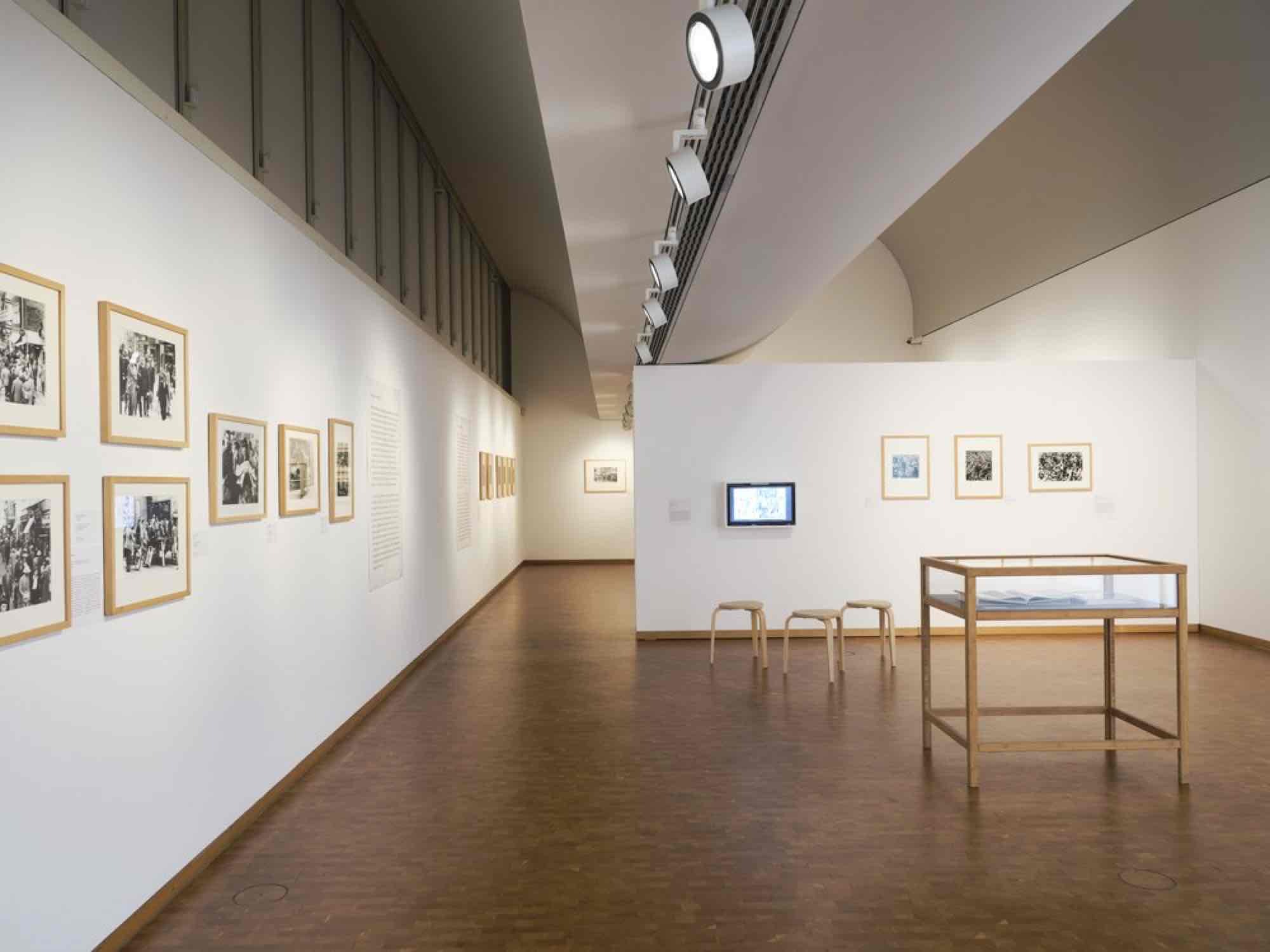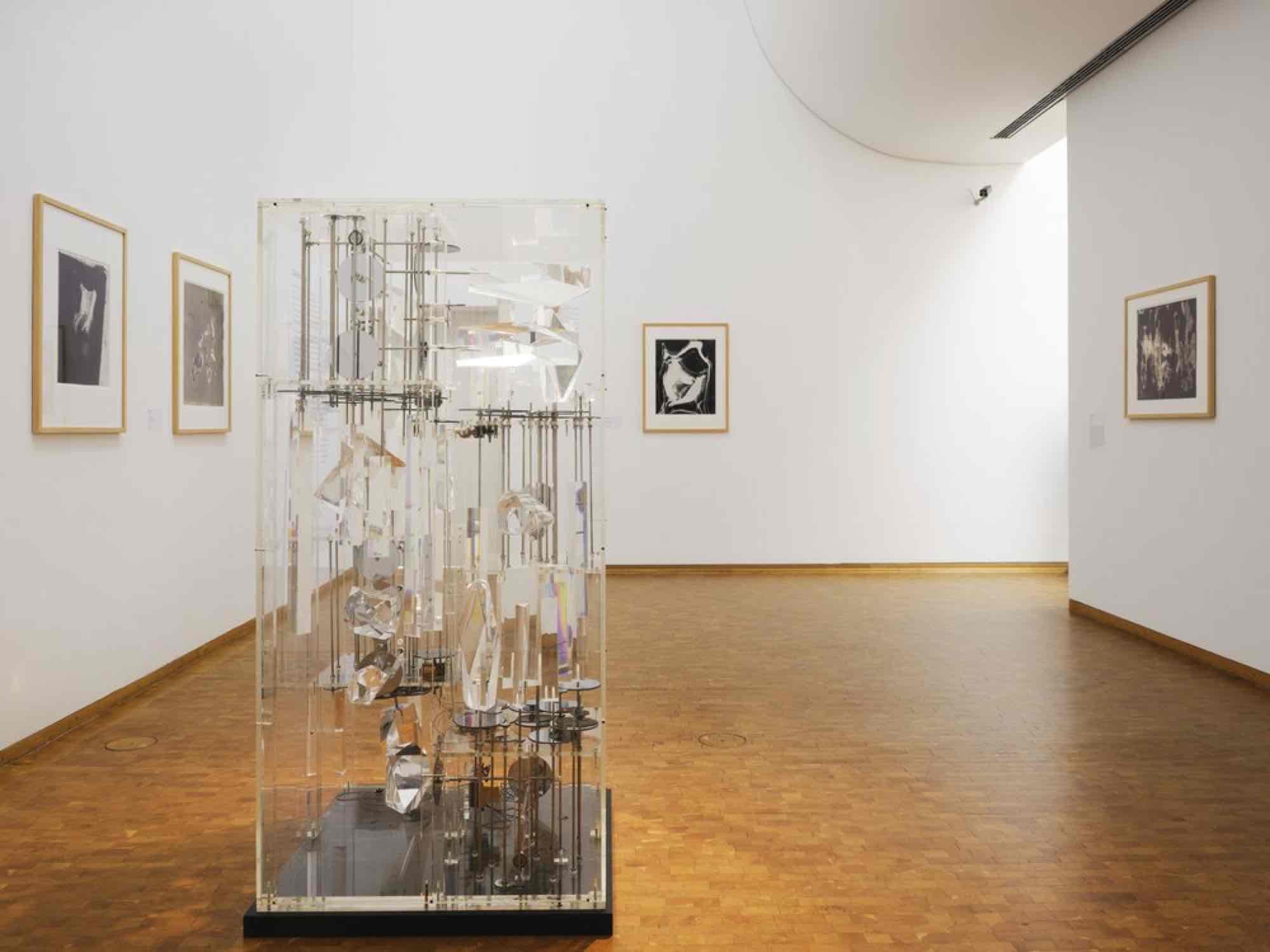Chargesheimer
27 Apr - 10 Nov 2024

Chargesheimer installation view Museum Ludwig, Cologne 27. 4. – 10.11.2024, Photo: Rheinisches Bildarchiv Köln/Marc Weber

Chargesheimer installation view Museum Ludwig, Cologne 27. 4. – 10.11.2024, Photo: Rheinisches Bildarchiv Köln/Marc Weber

Chargesheimer installation view Museum Ludwig, Cologne 27. 4. – 10.11.2024, Photo: Rheinisches Bildarchiv Köln/Marc Weber
On May 19, 2024, Cologne photographer Karl Heinz Hargesheimer, who was known as Chargesheimer (1924–1971), would have turned one hundred. To celebrate the centenary of his birth, Museum Ludwig will display a selection of around fifty of his works in the Photography Room. Chargesheimer rose to fame with his photo books Cologne intime and Unter Krahnenbäumen, both of which focus on everyday life in Cologne. The presentation includes forty-three pictures taken within the context of these two series. Two videos allow visitors to access the contents of the photo books. In addition, the presentation includes three of Chargesheimer’s lesser-known sculptures called Meditationsmühlen (Meditation Wheels) and six of his abstract photographic experiments.
In 1957 Chargesheimer’s photographs were published in Cologne intime, a photo book organized by Hans Schmitt-Rost, the then director of the Nachrichtenamt, or news agency, in Cologne. Chargesheimer was tasked with taking representative images of the reconstruction of the city, which had been reduced to ruins in the war, as well as depicting the “typical” residents of Cologne. The photographs contributed by Chargesheimer reflect his unusual, direct view of everyday life. In his 1958 book, Unter Krahnenbäumen, which he organized himself as an independent project, he juxtaposed similar photographs in starkly contrasting series of motifs. This documentation tells the unvarnished truth while affectionately exploring the street in Cologne whose name is featured in the book’s title. Chargesheimer shows life in the streets and in the bars of a lively Cologne neighborhood that was still intact. German writer Heinrich Böll wrote in the foreword to this publication, “Streets like this one are perhaps the only places where people really live.”
Chargesheimer pursued many interests. Alongside his documentary studies, he investigated photography as an image-producing medium. In the late 1940s, he began experimenting with light graphics and photochemical processes and creating photographs without a camera. Chargesheimer described his experiments with photographic plates and negatives in a text accompanying his first exhibition in Milan in 1950: “Panning, wiping, scraping, cooling, burning—adding acids, bases, colors, and varnishes.” These experiments resulted in painterly works in the style of Art Informel that was prevalent at the time.
In 1967 Chargesheimer began creating kinetic works called Meditationsmühlen (Meditation Wheels) made of Plexiglas. Three of these works from the collection of the Museum Ludwig will be presented in the exhibition for the first time in thirty years. Consisting of multiple levels of crystalline elements made of Plexiglas, the dome-shaped constructions are put into motion through a complex system of gears. The bewildering variety of light reflexes from Plexiglas prisms creates an unusual contrast to the precise mechanics of the gears. Chaos and control seem to complement one another here.
Curator: Barbara Engelbach
In 1957 Chargesheimer’s photographs were published in Cologne intime, a photo book organized by Hans Schmitt-Rost, the then director of the Nachrichtenamt, or news agency, in Cologne. Chargesheimer was tasked with taking representative images of the reconstruction of the city, which had been reduced to ruins in the war, as well as depicting the “typical” residents of Cologne. The photographs contributed by Chargesheimer reflect his unusual, direct view of everyday life. In his 1958 book, Unter Krahnenbäumen, which he organized himself as an independent project, he juxtaposed similar photographs in starkly contrasting series of motifs. This documentation tells the unvarnished truth while affectionately exploring the street in Cologne whose name is featured in the book’s title. Chargesheimer shows life in the streets and in the bars of a lively Cologne neighborhood that was still intact. German writer Heinrich Böll wrote in the foreword to this publication, “Streets like this one are perhaps the only places where people really live.”
Chargesheimer pursued many interests. Alongside his documentary studies, he investigated photography as an image-producing medium. In the late 1940s, he began experimenting with light graphics and photochemical processes and creating photographs without a camera. Chargesheimer described his experiments with photographic plates and negatives in a text accompanying his first exhibition in Milan in 1950: “Panning, wiping, scraping, cooling, burning—adding acids, bases, colors, and varnishes.” These experiments resulted in painterly works in the style of Art Informel that was prevalent at the time.
In 1967 Chargesheimer began creating kinetic works called Meditationsmühlen (Meditation Wheels) made of Plexiglas. Three of these works from the collection of the Museum Ludwig will be presented in the exhibition for the first time in thirty years. Consisting of multiple levels of crystalline elements made of Plexiglas, the dome-shaped constructions are put into motion through a complex system of gears. The bewildering variety of light reflexes from Plexiglas prisms creates an unusual contrast to the precise mechanics of the gears. Chaos and control seem to complement one another here.
Curator: Barbara Engelbach
